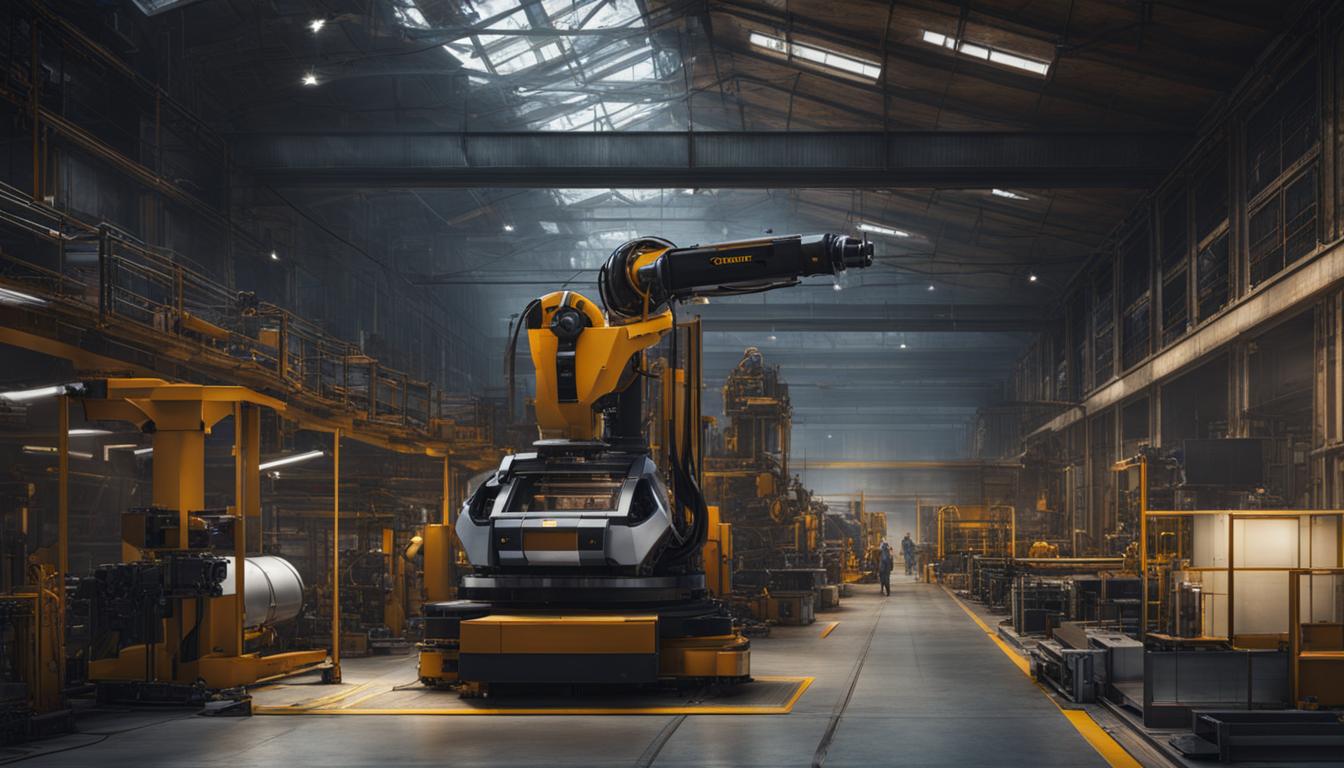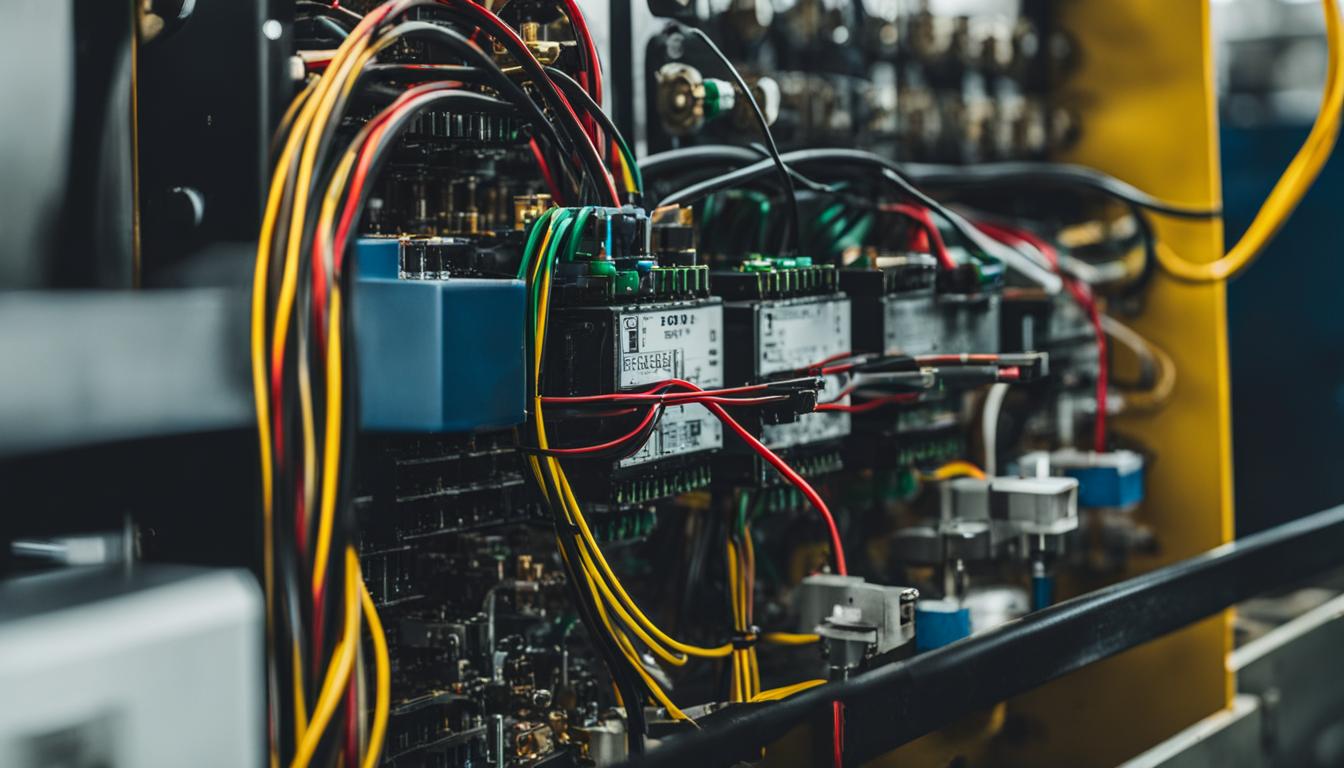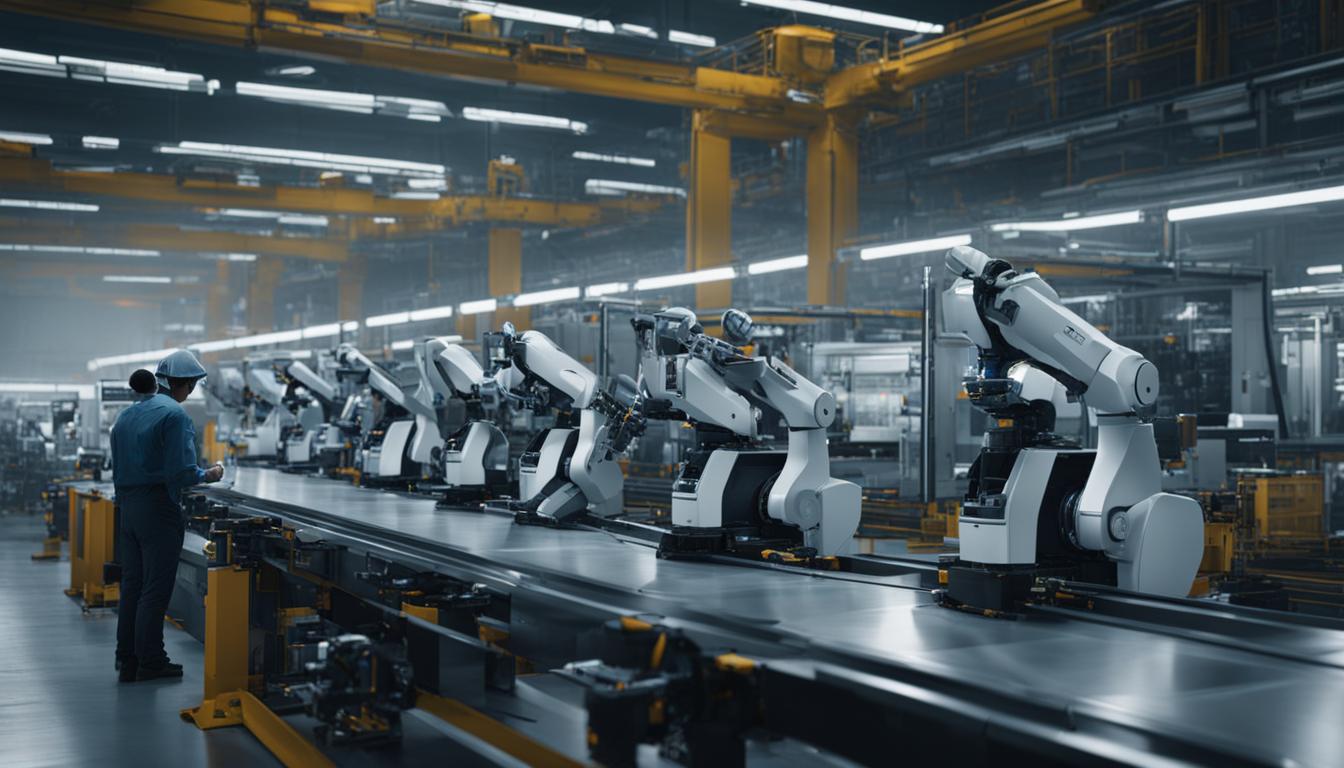In today’s rapidly evolving industrial landscape, manufacturers face numerous challenges that require them to optimize their production processes. From supply chain disruptions to changing customer needs and sustainability priorities, the need for resilience and agility is more critical than ever. At [Company Name], we understand the importance of staying competitive and profitable in this dynamic environment.
By partnering with manufacturing consulting services and leveraging technology-driven process optimization, manufacturers can unlock new levels of efficiency and productivity. Production optimization involves analyzing and adjusting the entire production system to maximize operational efficiency. This can be achieved through methodologies such as reengineering, lean manufacturing, Six Sigma, and business process management.
At [Company Name], we recognize that production optimization encompasses various aspects, including factory layout, machines and tools, procedures, and human-machine interface (HMI) design. By optimizing these elements and investing in upskilling and retraining staff, manufacturers can eliminate waste, improve quality, reduce variation, and ultimately enhance overall productivity.
Key Takeaways:
- Optimization of production processes is crucial for achieving operational efficiency and competitiveness in the manufacturing industry.
- Industrial manufacturers can benefit from hiring manufacturing consulting services and implementing technology-driven process optimization.
- Production optimization involves adjusting the production system through methodologies such as reengineering, lean manufacturing, Six Sigma, and business process management.
- Areas of focus for production optimization include factory layout, machines and tools, procedures, and human-machine interface (HMI) design.
- Investing in upskilling and retraining staff is crucial for successful production optimization and improved productivity.
What Is Production Optimization and How Does It Work?
Production optimization is a proactive process of adjusting the production system to maximize efficiency and productivity. It involves analyzing different aspects of the production process, such as equipment, staging areas, inventory protocols, facility layout, and conveyance. The goal is to rectify convoluted workflows, inconsistent productivity, late delivery, quality-control errors, workstation bottlenecks, poorly utilized space, slow production lines, and wasted time on repetitive tasks.
Common methods of process optimization in manufacturing include data analysis, simulation, process mapping, and statistical modeling. These techniques provide valuable insights into improving workflow, identifying bottlenecks, and optimizing resource allocation. By leveraging these analyses, manufacturers can make informed decisions to streamline their production processes and enhance operational efficiency.
Methods for Production Optimization
Several methodologies are employed to optimize production processes, each with its own set of advantages and focus areas. Let’s explore some commonly used techniques:
| Methodology | Description |
|---|---|
| Reengineering | Aims to redesign and improve existing processes to achieve significant improvements in efficiency and effectiveness. It involves reevaluating all aspects of the process, from workflows to resources, to identify potential optimizations. |
| Lean Manufacturing | Focuses on eliminating waste and maximizing value by continuously improving processes. It seeks to reduce non-value-added activities, optimize resource utilization, and create a culture of continuous improvement among employees. |
| Six Sigma | Employs statistical analysis to minimize process variation and defects. It aims to achieve near-perfect quality by identifying and eliminating root causes of errors and streamlining operations. |
| Business Process Management | Provides a systematic approach for managing and improving processes across the entire organization. It involves mapping out processes, identifying inefficiencies, and implementing changes to optimize overall productivity. |
By implementing these methodologies and leveraging data-driven insights, manufacturers can identify areas for improvement and implement changes to optimize the entire production process. These optimizations can lead to increased efficiency, reduced costs, improved product quality, and enhanced customer satisfaction.
Benefits of Production Optimization
Optimizing production processes brings numerous advantages to manufacturing companies. Here are some key benefits:
“Production optimization leads to increased efficiency, improved workflow, and enhanced productivity, resulting in reduced costs and improved profitability.”
By implementing production optimization techniques, manufacturers can:
- Maximize Efficiency: Identify and rectify bottlenecks, reduce waste, and streamline workflows to improve overall productivity.
- Enhance Productivity: Optimize resource allocation, minimize downtime, and improve throughput to maximize output.
- Improve Product Quality: Reduce process variations, enhance quality control measures, and minimize defects to deliver higher-quality products.
- Optimize Workflow: Identify and eliminate inefficiencies, reducing lead times and enhancing overall process flow.
- Implement Technological Innovations: Leverage advanced technologies, such as automation and machine learning, to improve efficiency and achieve operational excellence.
Production Optimization vs. Process Optimization
In the realm of manufacturing, optimizing production processes is crucial for achieving efficiency and maximizing productivity. Two key approaches to achieving these goals are production optimization and process optimization. While both aim to enhance operational efficiency, they differ in their scope and methodology.
Process optimization focuses on analyzing and streamlining specific steps within the production system to eliminate inefficiencies and improve productivity. It involves identifying bottlenecks, reducing waste, and optimizing individual processes to achieve greater efficiency. By implementing process optimization strategies, manufacturers can address specific challenges and enhance the performance of isolated components within the production system.
Production optimization, on the other hand, takes a broader perspective by aiming to optimize the entire production process. It involves analyzing the flow rates, machine layout, labor utilization, and other factors to improve the overall functions of the production system. Production optimization utilizes models based on real-time data to identify areas for improvement and implement changes that can lead to increased efficiency and lower costs.
In production optimization, various elements of the production system are considered, including factory layout, equipment, tools, work-in-progress (WIP) procedures, human-machine interface (HMI) layout, and workforce skills. By making changes to these elements based on real-time data and performance models, manufacturers can achieve significant improvements in operational efficiency.
Take, for example, the rearrangement of factory layout to minimize the distance traveled by workers or materials, reducing time wastage and improving productivity. Another example is the implementation of new WIP procedures that optimize the flow of materials and streamline production. Additionally, assessing the HMI layout and upskilling and retraining staff can further enhance efficiency.
Here’s a comparison between production optimization and process optimization:
| Production Optimization | Process Optimization |
|---|---|
| Optimizes the entire production process | Focuses on specific steps or processes within the production system |
| Utilizes real-time data and models to analyze various factors | Targets individual processes for improvement |
| Involves rearranging factory layout, changing equipment, implementing new procedures, and optimizing workforce skills | Identifies and eliminates inefficiencies within specific processes |
| Aims for increased efficiency and cost reduction at a broader scale | Aims for efficiency improvements within specific processes |
By understanding the distinctions between production optimization and process optimization, manufacturers can develop comprehensive strategies that address both the big picture and specific process improvements. This holistic approach allows for greater efficiency gains and cost reductions, resulting in a competitive advantage in the market.

Unlocking Maximum Efficiency: The Benefits of Production and Process Optimization
Manufacturing companies that prioritize production and process optimization experience a wide range of benefits. Through these optimization measures, companies can significantly improve efficiency, output, resource utilization, and more. Let’s take a closer look at some of the key advantages:
Improved Machine Operating Time
One of the primary goals of production optimization is to address the root causes of unplanned downtime. By identifying and resolving issues such as machine breakdowns, operator errors, and quality issues, companies can dramatically improve machine operating time. This leads to increased productivity and reduces disruptions in the production process.
Faster Resolutions at the Machine Level
Data visualization and analysis play a crucial role in process optimization. By utilizing these tools, companies can identify areas that require improvement and optimize workflow to enable faster resolutions at the machine level. This enables efficient problem-solving and minimizes delays, further enhancing overall productivity.
Proactive Maintenance
Proactive maintenance is a key aspect of production optimization. By leveraging real-time data, manufacturing companies can implement proactive maintenance programs. These programs help improve equipment functioning and maximize uptime by scheduling replacements or repairs during low-demand periods. This approach reduces unexpected breakdowns, enhances reliability, and ensures optimal utilization of resources.
Enhanced Product Quality
Optimized production processes significantly contribute to enhanced product quality. By reducing variation, improving accuracy, reliability, durability, and minimizing defects, companies can produce high-quality products consistently. This not only increases customer satisfaction but also reduces the need for rework or returns, saving valuable time and resources.
Operation Transparency
Streamlining processes, automating tasks, and improving communication between departments leads to improved operation transparency. Increased transparency enables better coordination, faster decision-making, and smoother collaboration among team members. This enhanced visibility ensures that everyone is aligned with the production goals and can take necessary actions promptly to maintain optimum efficiency.
Better Resource Allocation
Identifying and eliminating inefficient or unnecessary steps in the production process results in better resource allocation. By streamlining workflows and eliminating bottlenecks, companies can reduce costs and optimize resource utilization. This includes effectively managing manpower, materials, and equipment to achieve maximum productivity while minimizing waste.
These benefits work together to create a highly efficient and productive manufacturing environment. By implementing production and process optimization measures, companies can unlock their maximum potential and achieve sustainable growth.
| Benefits of Production and Process Optimization |
|---|
| Improved machine operating time |
| Faster resolutions at the machine level |
| Proactive maintenance |
| Enhanced product quality |
| Operation transparency |
| Better resource allocation |
What Does Process Optimization Entail?
In manufacturing, process optimization involves analyzing three primary areas: equipment, operations, and controls. Each area plays a crucial role in improving overall efficiency and productivity.
Equipment Optimization
Equipment optimization focuses on enhancing the performance, efficiency, reliability, and safety of industrial manufacturing equipment. By analyzing production data, developing programs to improve production, inspecting equipment, and identifying areas of inefficiency, manufacturers can optimize their equipment to achieve higher productivity and reduce downtime.
Controls Optimization
Controls optimization leverages machine controls and automated systems to optimize the production of goods. Efficient workflow design, optimization of production-line processes, and IT-facilitated automation are key aspects of controls optimization. By streamlining processes and integrating automation technologies, manufacturers can achieve greater efficiency and accuracy in their production processes.
Operations Optimization
Operations optimization considers various factors such as cost, process time, quality, and output rate to determine the most profitable solutions. It involves assessing various operational tasks and activities to gain valuable insights into bottlenecks and redundancies. By identifying and eliminating inefficient or unnecessary steps, manufacturers can achieve more cost-efficient operations.

Process optimization requires a comprehensive analysis of these three areas to identify opportunities for improvement and implement changes that result in greater efficiency, productivity, and profitability.
Manufacturing Process Optimization Problems
While manufacturing process optimization strategies offer significant value, they also come with challenges. Insufficient real-time data hinders decision-making and prevents timely identification of bottlenecks and production inefficiencies. Getting objective information is crucial for making informed decisions, and methods need to integrate relevant data sources and utilize effective analytical procedures. Tracking vanity metrics unrelated to key performance indicators can lead to misplaced focus. Resistance to change can impede the adoption of new technologies and optimization efforts.
Overcoming these challenges requires leveraging real-time data technologies, such as the Industrial Internet of Things (IIoT), automatic quality control, and blockchains, to optimize manufacturing processes and improve decision-making.
The Impact of Insufficient Real-Time Data
| Challenges | Solutions |
|---|---|
| 1. Limited visibility into production processes | Implementing IIoT sensors to collect real-time data and provide visibility into key metrics |
| 2. Inability to identify bottlenecks and areas of inefficiency | Utilizing advanced data analytics tools to analyze real-time data and identify areas for improvement |
| 3. Delayed decision-making due to data lag or inaccessibility | Implementing centralized data management systems to ensure real-time accessibility of key production data |
Addressing Resistance to Change
“The only way to make sense out of change is to plunge into it, move with it, and join the dance.” – Alan Watts
Resistance to change is a common challenge in manufacturing process optimization efforts. Employees may be hesitant to adopt new technologies or change existing processes due to fear of the unknown or concerns about job security.
To address resistance to change:
- Communicate the benefits of process optimization and how it can improve job satisfaction and efficiency.
- Involve employees in the optimization process by seeking their input, addressing concerns, and providing training and support.
- Highlight success stories of other companies that have embraced change and reaped the benefits.
By overcoming these challenges, manufacturers can unlock the full potential of manufacturing process optimization and achieve improved operational efficiency, productivity, and profitability.
Conclusion
Optimization of production processes plays a critical role in achieving efficiency, productivity improvement, and cost reduction in the manufacturing industry. By utilizing process mapping, statistical modeling, reengineering, lean manufacturing, Six Sigma, and business process management, manufacturers can identify areas for improvement and implement changes to optimize their entire production process.
The benefits of process and production optimization are numerous. Manufacturers can expect improved machine operating time, faster resolutions at the machine level, proactive maintenance, enhanced product quality, operation transparency, and better resource allocation. These improvements not only maximize operational efficiency but also contribute to increased profitability and customer satisfaction.
However, the journey towards production optimization is not without challenges. Insufficient real-time data, the need for objective information, tracking vanity metrics, and resistance to change can hinder progress. To overcome these obstacles, embracing technologies like the Industrial Internet of Things (IIoT), automatic quality control, and blockchains can provide the necessary tools and insights for successful optimization.
In conclusion, by leveraging process and production optimization techniques and addressing the challenges along the way, manufacturers can achieve heightened operational efficiency, enhance their competitiveness, and thrive in today’s dynamic manufacturing landscape.
FAQ
How does machine programming affect the efficiency of production processes?
Machine programming plays a crucial role in optimizing production processes. Efficient programming enables machines to perform tasks accurately and quickly, resulting in improved productivity and reduced errors.
What is the concept of production optimization and how does it work?
Production optimization involves analyzing various aspects of the production process, such as workflow, inventory protocols, and facility layout, to identify areas for improvement. By implementing changes based on the analysis, manufacturers can maximize efficiency and productivity.
What is the difference between production optimization and process optimization?
Production optimization focuses on improving the entire production process to achieve maximum efficiency, while process optimization involves eliminating specific steps within the production system to enhance efficiency.
What are the benefits of production and process optimization?
Production and process optimization can lead to improved machine operating time, faster resolutions at the machine level, proactive maintenance, enhanced product quality, operation transparency, and better resource allocation, resulting in increased efficiency and profitability.
What does process optimization entail?
Process optimization involves analyzing equipment, operations, and controls to identify areas of inefficiency. By making changes such as improving equipment performance, optimizing production-line processes, and assessing operational tasks, manufacturers can enhance productivity and reduce costs.
What are the common challenges in manufacturing process optimization?
Challenges in manufacturing process optimization include the lack of real-time data, the need for objective information, tracking vanity metrics, and resistance to change. Overcoming these challenges requires leveraging technologies and implementing effective analytical procedures.
How can optimization of production processes benefit manufacturers?
By optimizing production processes, manufacturers can achieve increased efficiency, output, resource utilization, improved machine operating time, proactive maintenance, enhanced product quality, operation transparency, and better resource allocation, resulting in reduced costs and improved customer satisfaction.




